“If you’re walking through a supermarket, bring your ancestors home with you.” – Valerie Segrest (Muckleshoot)
Since time immemorial, Indigenous food systems have nourished and continue to nourish Indigenous communities and cultures. From harvesting corn and wild rice to picking berries and plants or hunting buffalo and deer, the diverse cuisines of Indigenous people are influenced by their geographic locations.
However, centuries of colonization have separated Indigenous communities from their traditional foods. Federal policies promoting settler colonialism, land theft, and forced removal of Native people disrupted food systems and lifeways. Native Nutrition Educator Valerie Segrest (Muckleshoot) explains this as: “…a loss of land, a loss of rights, a loss of knowledge, environmental toxins, cultural oppression and a modern lifestyle that impedes our access to traditional foods.” As a result, Native people have had to reimagine their existence after being forced onto reservations, often on lands that are foreign to them.
In spite of settler colonialism, Native people continue utilizing and growing traditional foods as part of their everyday diets, from revitalizing ancestral gardens within an urban environment to traditional ways of hunting, gathering, and seed saving.
Recently, the Newberry acquired a small pamphlet from the mid-20th century containing traditional recipes from Native people of the Great Plains, such as the Mandan and Oceti Sakowin. The pamphlet, which is titled “Recipes of the Plains Indians,” offers a look into cooking traditional recipes while also balancing them with foods introduced into the Indigenous diet during colonization, such as frybread.
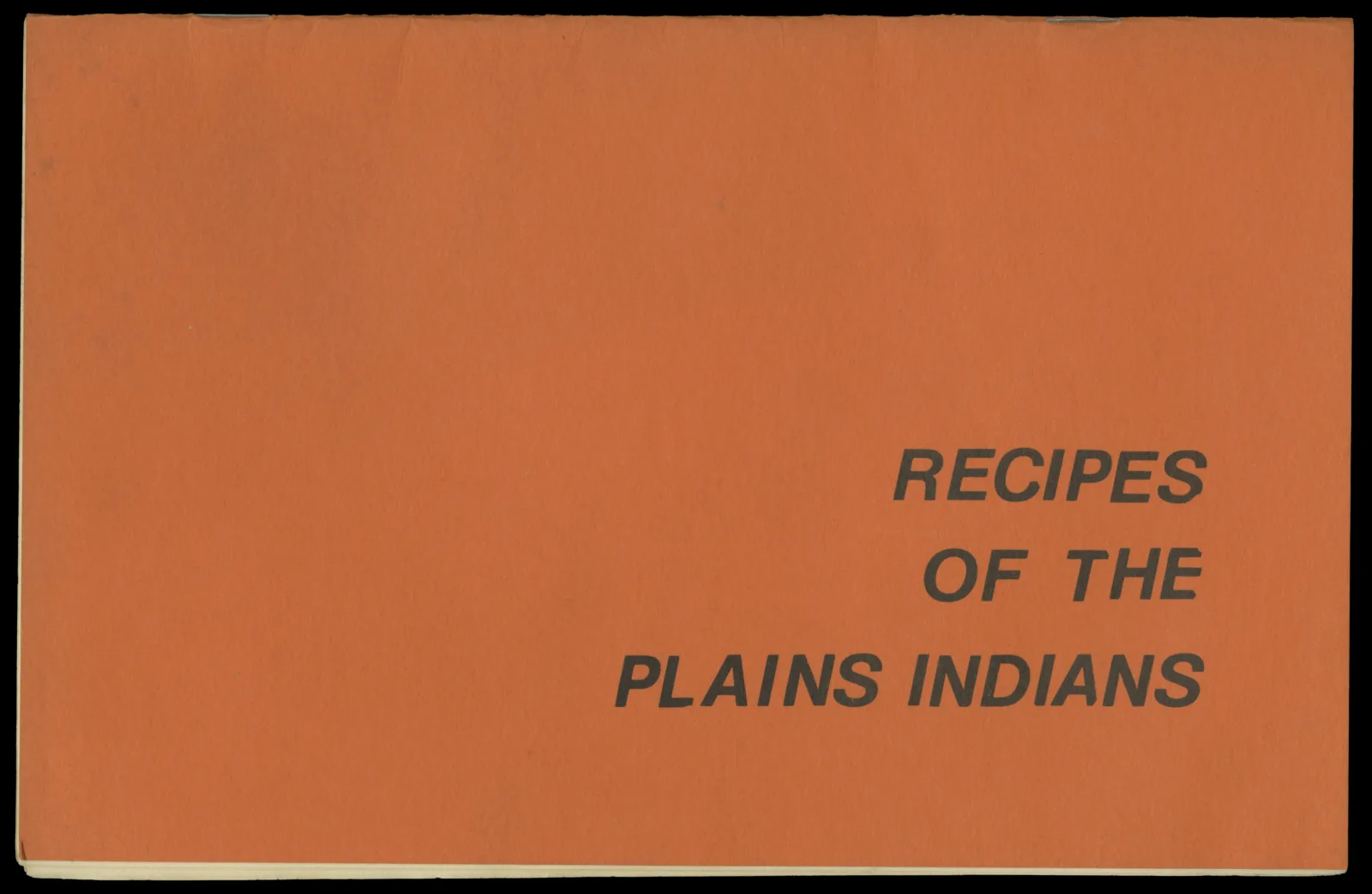
As the text in the pamphlet describes, [prior to colonization]:
“There was no such thing as junk food! These recipes have been gathered from generations of Indian cooks, wise in the ways of nature and appetites. They've been adapted slightly to include foods available to most people today. The same recipes are in use in many traditional Indian homes to this day--changed to accommodate modern tastes and food supplies. But this doesn't mean they've lost their authenticity--for Plains Indian cooking has always been an excellent demonstration of making the very best of what's available"
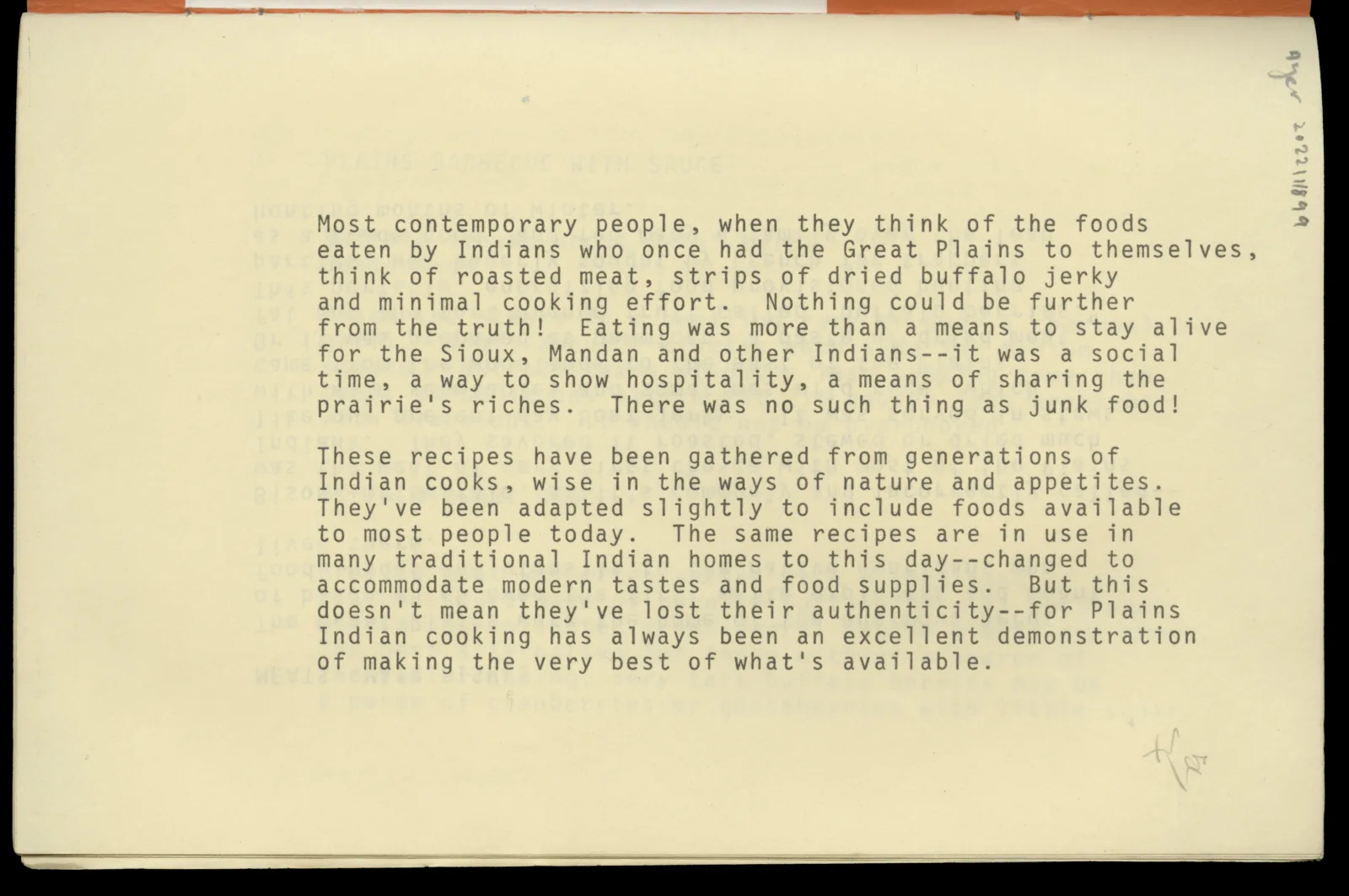
The pamphlet is believed to be from 1975. It was created during the Red Power Movement of the 1960s and 70s, a time period marked by a series of social movements—led by primarily Native American youth—to demand self-determination for Native People in the United States.
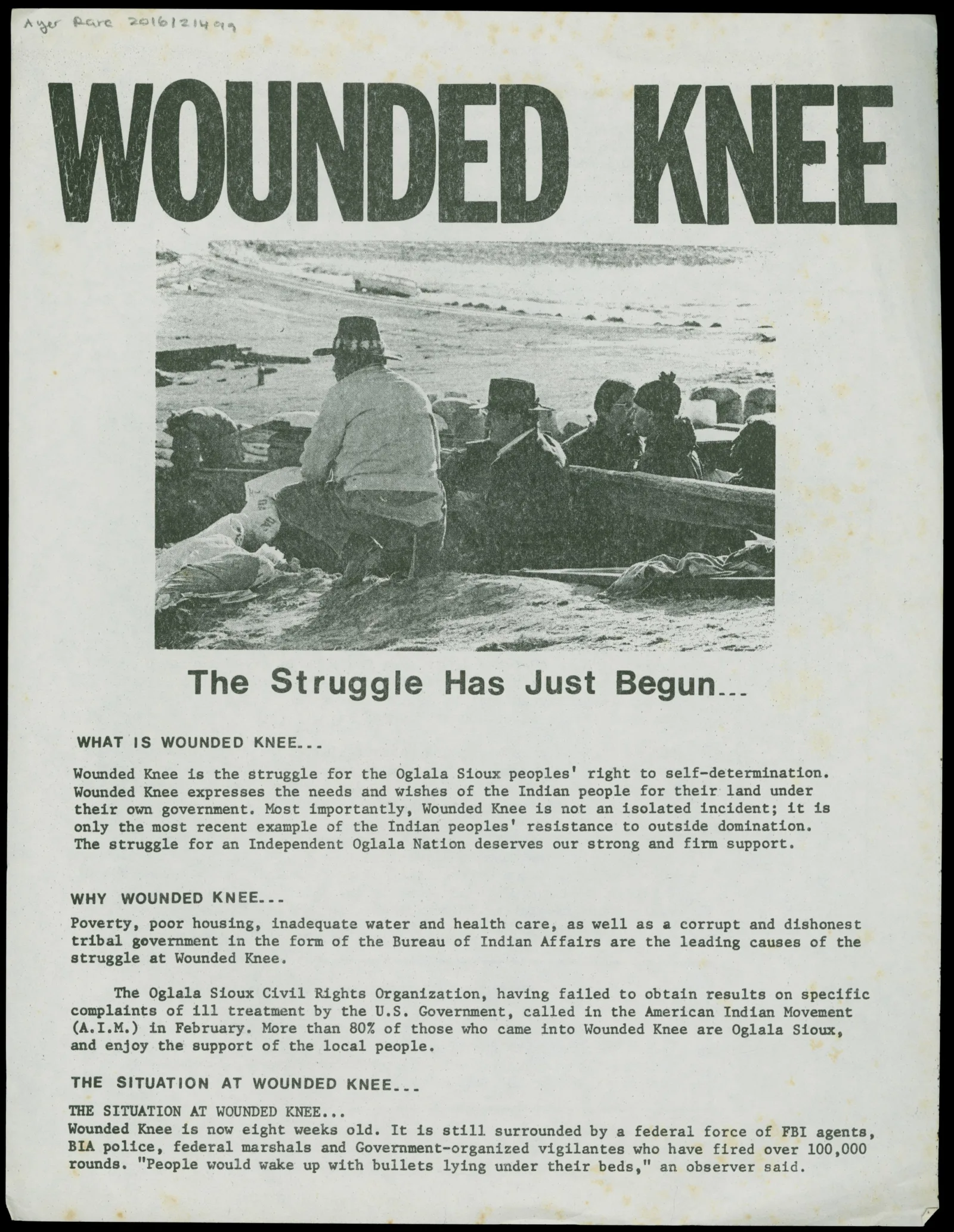
Many organizations were part of the Red Power Movement, and evidence of intersectional organizing happening across communities in Canada and Latin-America exists as well. These organizations included the American Indian Movement (AIM), the Women of All Red Nations (W.A.R.N.), National Indian Youth Council (NIYC), and even local Chicago organizations such as the Chicago Indian Village (C.I.V.).

The movement sought and fought for sovereignty and self-determination of Native people, including the inherent right to make policies and programs for themselves while maintaining and controlling their own land and resources–including food sovereignty.
The term “food sovereignty” was coined and officially attributed to members of Via Campesina in 1996, but Indigenous people have been practicing food sovereignty since time immemorial. Food sovereignty as defined by the Via Campesina asserts that the people who produce, distribute, and consume food should control the mechanisms and policies of food production and distribution. Indigenous food sovereignty is the inherent right of Indigenous people to define their own food systems.
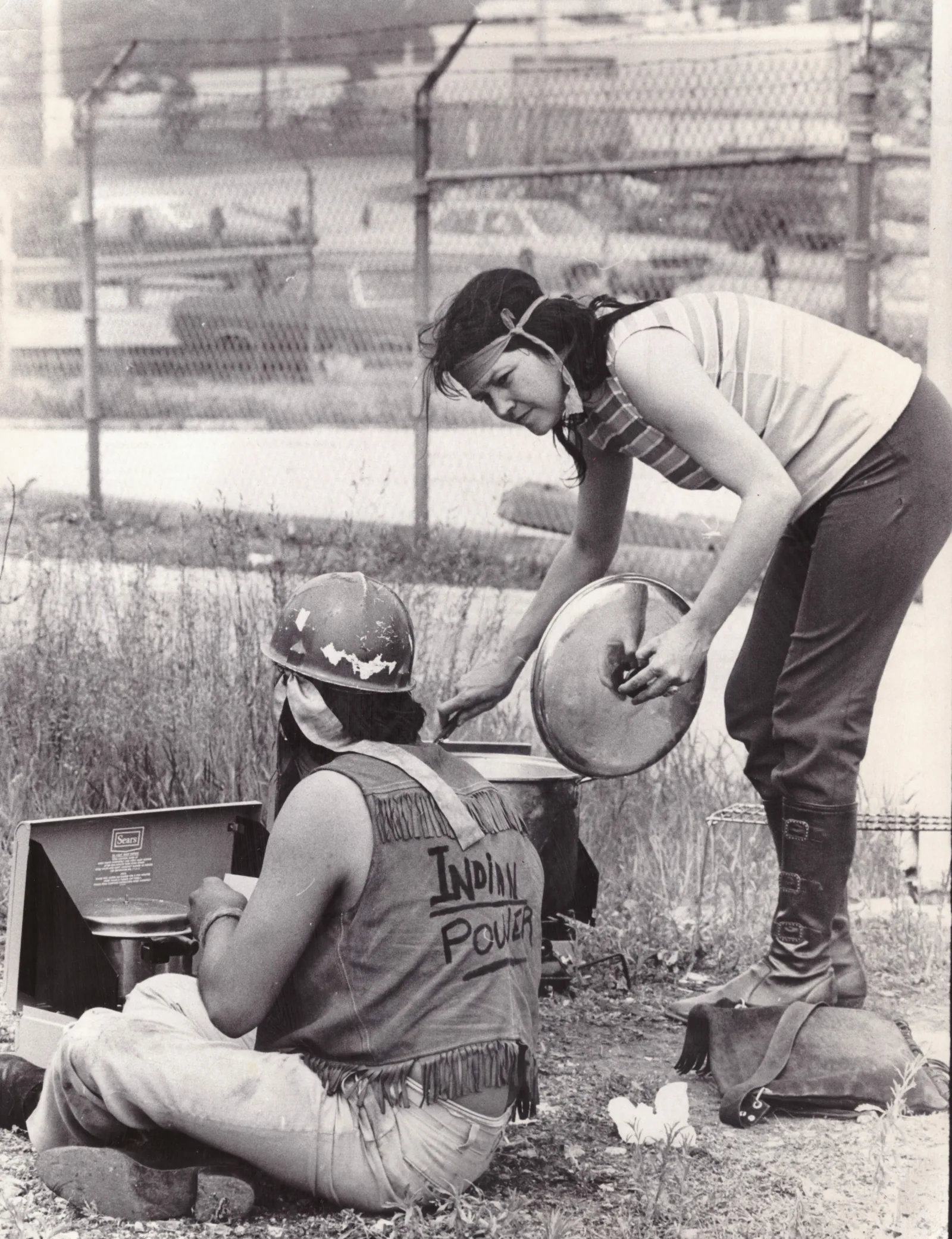
Throughout Indian Country, Indigenous food sovereignty describes a myriad of local efforts to transform and reclaim local food systems. This includes combating hunger in areas of food apartheid. The term “food apartheid” more accurately describes the racist and oppressive systems that lead to inequitable food environments rather than the commonly used phrase "food desert,” which was coined by researchers to define areas where people have low incomes and low physical access to supermarkets. Other food sovereignty initiatives include increasing access to healthy and traditional foods to enhance community health, creating food policies, and targeting food as a mechanism for entrepreneurship and economic development.
An interesting section of the “Recipes of the Plains Indians” pamphlet describes cooking with a variety of wild plants such as milkweed and dandelion. Many of these plants carry tremendous health benefits. For example, aside from being added to dishes for flavor or to thicken soups, Native milkweed has been known to treat swelling, rashes, coughs, fevers and asthma. Dandelion leaves are used to stimulate the appetite and help digestion. Dandelion flowers have antioxidant properties and may also help improve the immune system. Many still use dandelion root to detoxify the liver and gallbladder, and dandelion leaves to help kidney function.
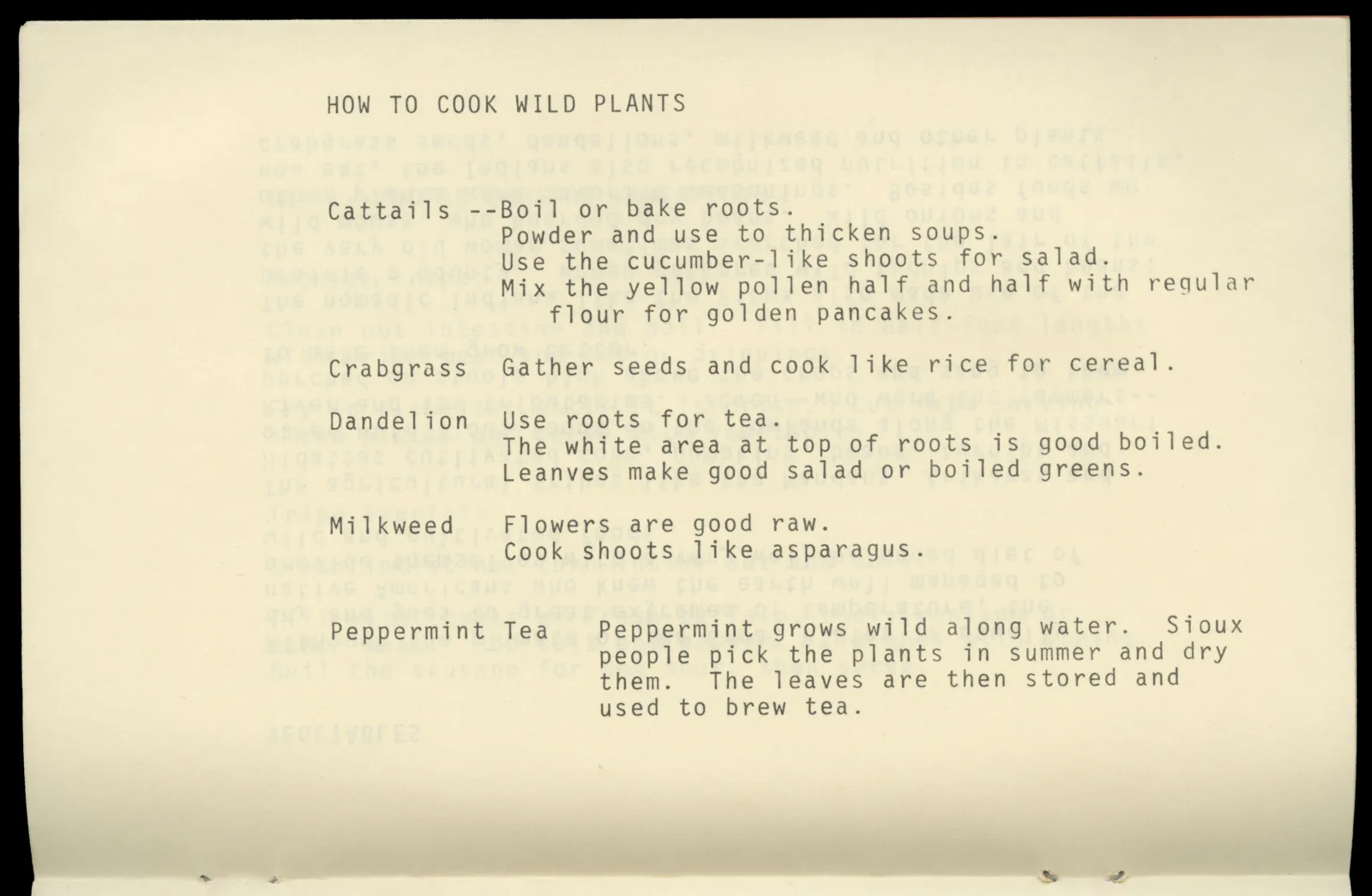
In other sections of the pamphlet, we see a recipe for “Fresh Corn Soup.” I made it at home using corn from my garden along with dandelion root and greens I had previously harvested.
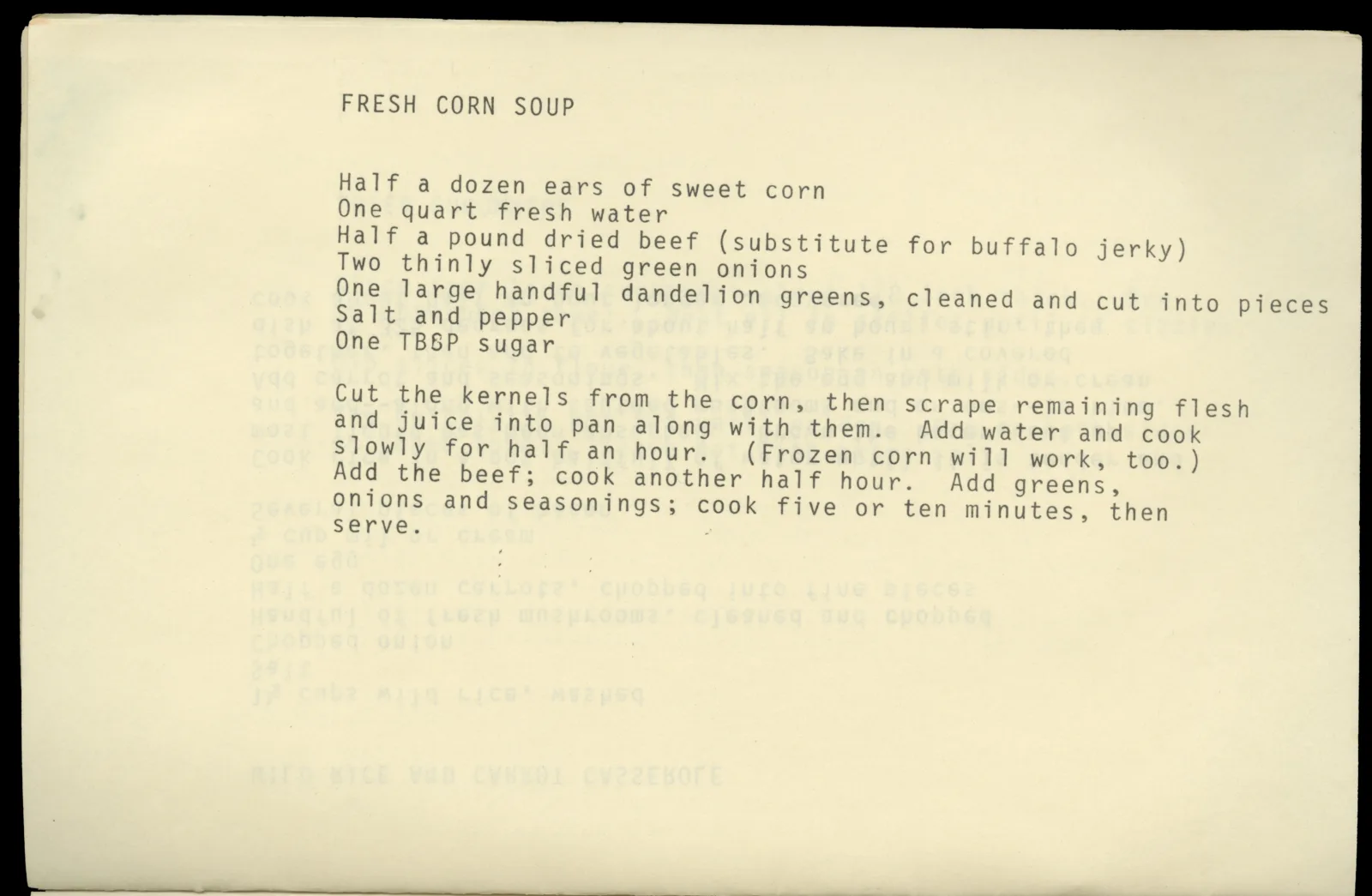
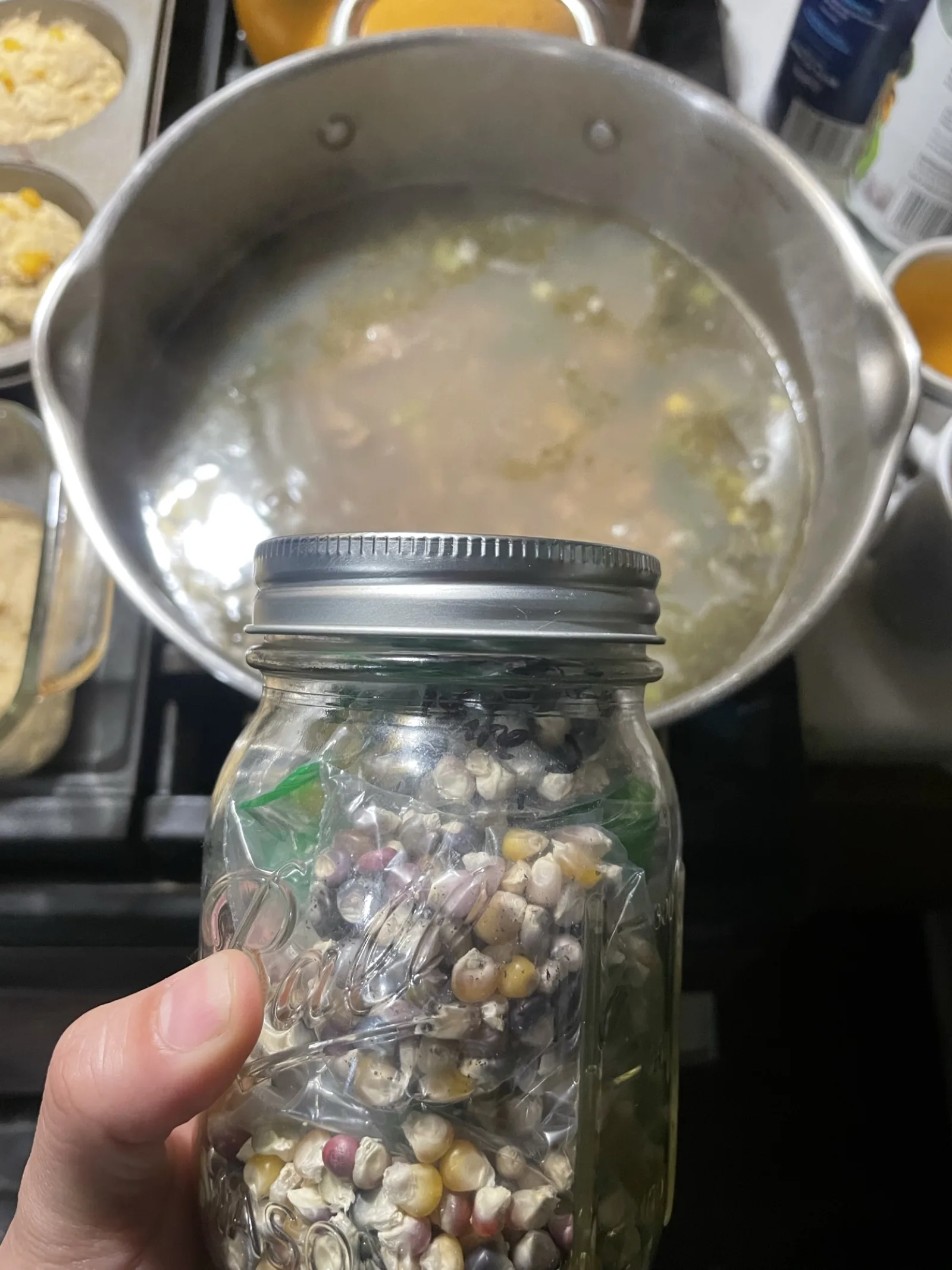
This recent acquisition is a wonderful addition to many other materials the Newberry holds within the American Indian and Indigenous Studies collection related to the Red Power Movement and organizations like the American Indian Movement, the Alcatraz Island Occupation, and the Chicago Indian Village.
About the Author
Analú López is the Ayer Librarian and Assistant Curator of American Indian and Indigenous Studies at the Newberry.